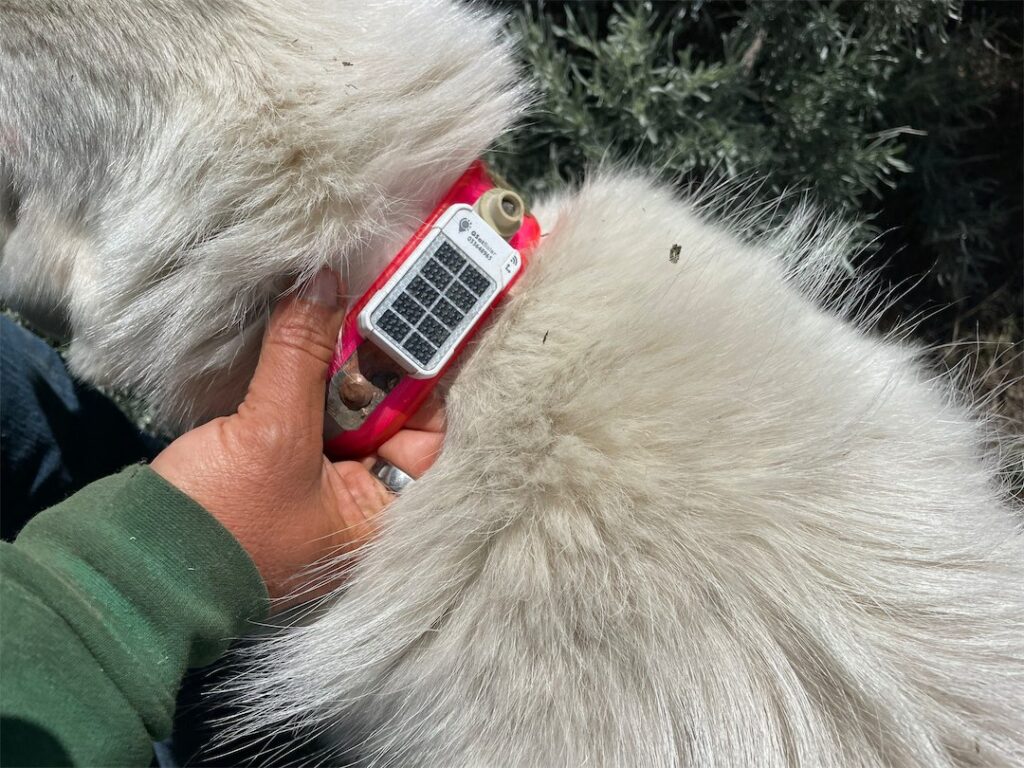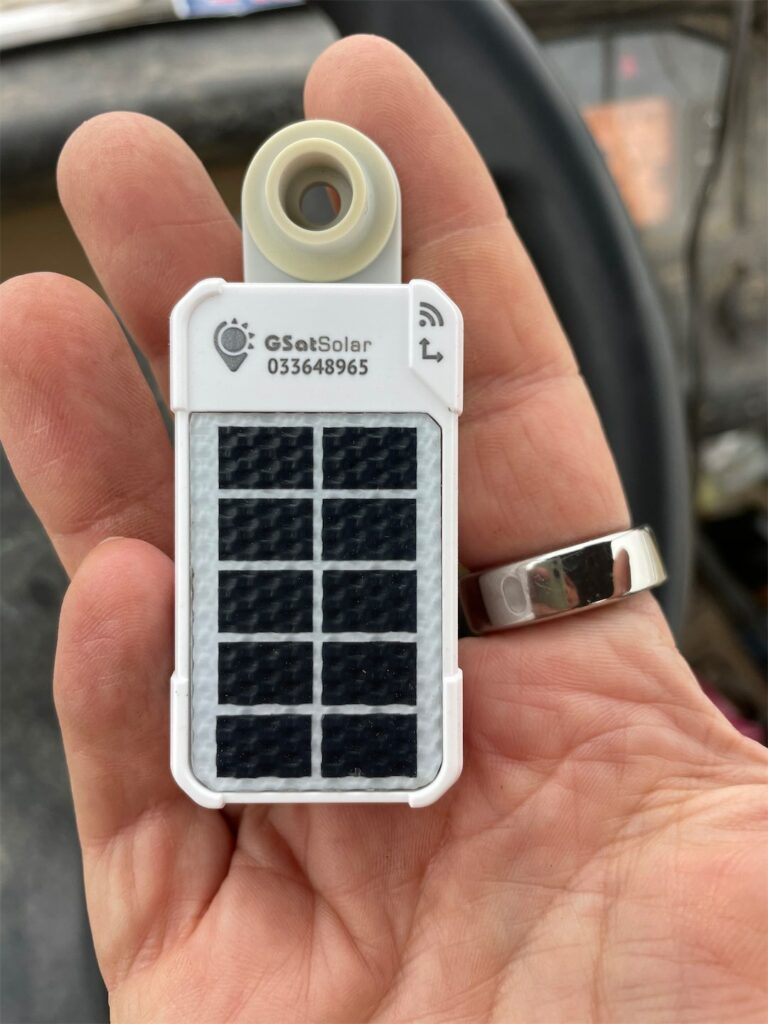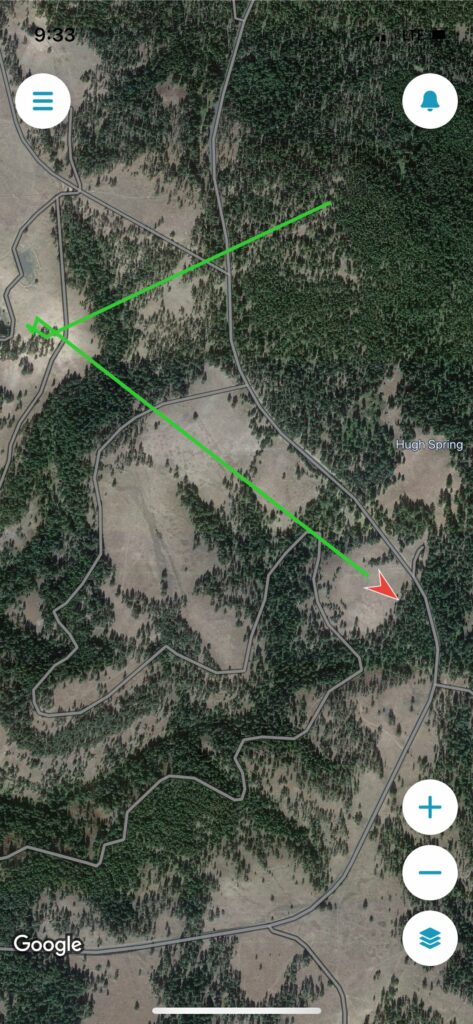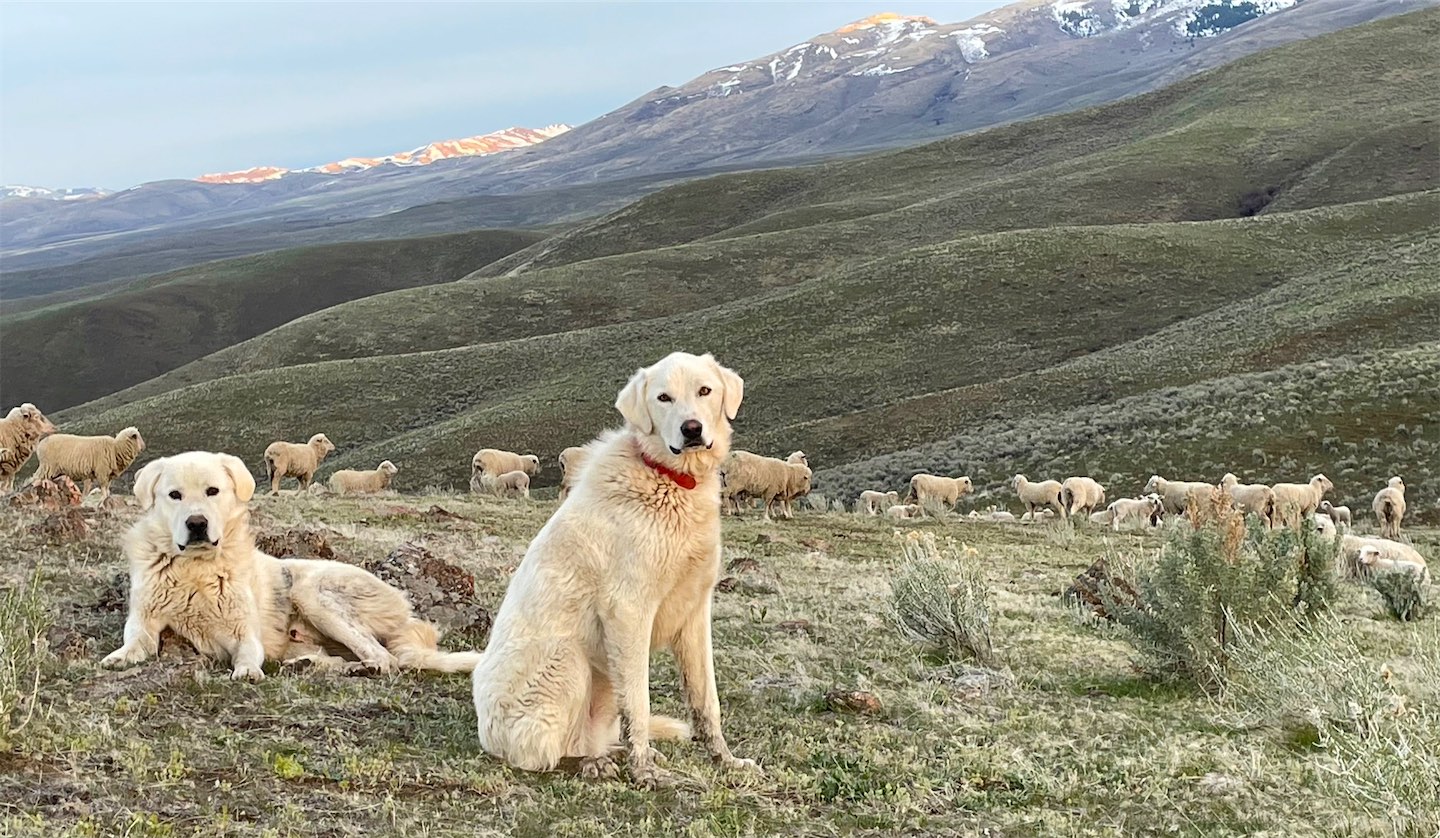Keeping track of the guardians
As large carnivores expand their presence on the Western landscape, livestock producers are worrying more about the safety of their livestock guardian dogs. Kim Kerns, a sheep and cattle rancher in NE Oregon, is one of them. “For the last several years I’ve been trying to figure out a way to track my guard dogs. We tried several options, but convincing a sheepherder to charge a collar every other day is hard,” lamented Kerns. In addition to the challenge of keeping a tracking collar charged and working, cell coverage cannot be counted on in the areas where livestock guardian dogs spend their time.
Kerns searched the internet to find an option that would work. She discovered LoneStar Tracking in Texas, a company that manufactures a solar-powered satellite GPS ear tag for cattle. The tag comes with three years of service and a one-time payment of either $249 for 6-hour updates or $275 for 2-hour updates. Kerns’ main dog, Opal, is particularly critical to the operation, so Kerns ordered a tag for her with 2-hour updates to trial. “We tagged it to the collar and riveted the other side down. It needs to stay on top to charge and maintain line of sight with the satellite, so I wired fishing weights to the collar D-ring as a counterweight. When Outdoor Dog Supply made the collars, they shifted the name plate to the side to make room for the tag on top.”

“I get a really good idea of where she’s at. I’ve tested it out a few times and I’m really happy with it. We’ve had no problems with it charging or breaking, and I’m ordering more tags for my other dogs too.”
Kim Kerns
The GPS tag is connected to the app LockON GPS, which is downloaded to a mobile device for location updates. The app uses Google Maps and provides the dog’s most recent location and direction of travel. Kerns told On Land that the relief she feels has been worth every penny. “I get a really good idea of where she’s at. I’ve tested it out a few times and I’m really happy with it. We’ve had no problems with it charging or breaking, and I’m ordering more tags for my other dogs too.”


Sorry, the comment form is closed at this time.






Sheepherder
I have the battery powered Lonestar. It needs 3 lithium AAA batteries, about $2 each, that seem to last 3-5 weeks. If I get another GPS collar I will try the solar unit.